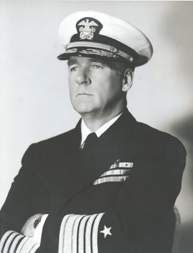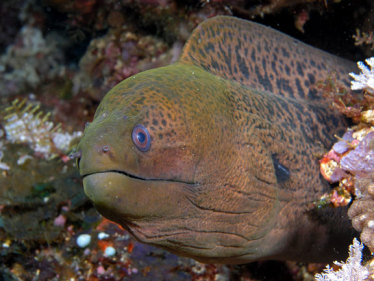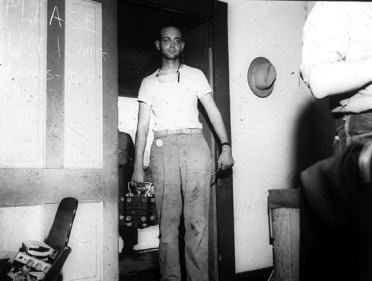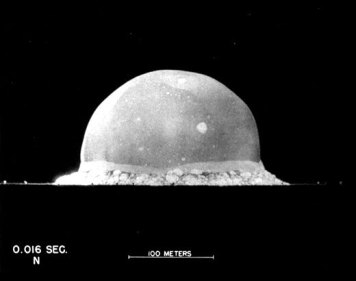Testing, One, Two Three…
The Last Cruise of the Battleship Nagato
Part Three:
Testing, One, Two Three…

(VADM “Spike” Blandy, Commander, Joint Task force ONE)
“The bomb will not start a chain-reaction in the water converting it all to gas and letting the ships on all the oceans drop down to the bottom.
It will not blow out the bottom of the sea and let all the water run down the hole. It will not destroy gravity. I am not an atomic playboy, as one of my critics labeled me, exploding these bombs to satisfy my personal whim.”
– Vice Admiral W.H.P. Blandy, Commander Joint Task Force One, Operation Crossroads
You could argue that when the hook went down at Bikini, our job was pretty much done. We would be supporting the tests of the Atom Bomb on our target ship, of course, but it was Washington that was running this show in the placid and peaceful waters of Bikini Atoll.
It was quite remarkable. Scientists swarmed aboard fitting us out with instruments to measure the effects of the atomic bomb on the ship. It was best to stay out of their way, so I found a flat-topped coral head with a foot of water over it at low tide. The work-boat dropped me off there every morning on its way to the beach and picked me up on its way back three or four hours later. This paradise I shared with a moray eel. I never saw all of him but his neck was as thick as the upper part of my leg. I had a harpoon and probably could have taken him in a fight but though he watched me carefully, gulping in a meditative way, he never made a move to attack.

(Moray eel. Image courtesy Wikipedia).
Of course, if he had any idea what we were going to do to that coral head he called home he might better have been advised to do so. As would I, and the rest of my shipmates. There was no particular reason for us to know what was going on. We all knew that the use of the two bombs against Hiroshima and Nagasaki had eliminated the grim necessity for a massive invasion of the Home Islands, and one could argue that it was the astonishing nature of the Bombs that gave the proud Japanese the ability to throw in the towel with honor.
Certainly a lot of us would have been killed, and more of them.
I knew that for a cold hard fact. I had visited the Imperial Naval station at Saesebo on the island of Kyushu as part of my assignment with NavTechJap, which was the abbreviated designation for the US Naval Technical Mission to Japan. We reported to Captain C.G. Grimes, who had been Fleet Intelligence Officer in charge of Technical Assessment at the JICPOA in Hawaii during the war. He was charged with collecting the essential elements of information contained in the intelligence annex for Operation Blacklist, the secret plan for the Occupation of Japan.
It was secret for a good reason. The invasion of Kyushu was termed “Operation OLYMPIC,” which would have been followed by “Operation CORONET” on the island of Honshu. Both were expected to go on for months, but Blacklist provided for contingency operations in the event of a sudden capitulation of the militarists. In light of the effect of the Atom Bombs, that is precisely what happened, and Captain Grimes was designated Chief of Mission.
Sasebo was just north of Omua Bay, on which the city of Nagasaki was located, so it was not hard to appreciate the magnitude of the power unleashed on the city. Sasebo had been one of the finalists for the honor of the Atomic demonstration, something that did not pass without comment when we visited.
I have always been amazed that the two bombs dropped on Japan were only the second and third times the technology had been attempted. Many of the technicians who swarmed aboard Nagato had been at the first one, the Trinity test on the Alamogordo weapons range in New Mexico. When we detonated the next two in the air above the two cities we really did not have much of an idea about what their effects were going to be, except that we knew it was going to be huge. There was no way to really understand how these things worked and what they did except to take the time, now that we had it, to understand it.
The chain of events that ended the war came with incredible speed. In the New Mexico desert on 16 July 1945, scientists of the Manhattan District secretly carried out the “Trinity Test” with the first explosion of the atomic bomb. On 5 August, only three weeks after this test, the first military atomic bomb exploded over Hiroshima, and a few days later another atomic bomb exploded over Nagasaki. The Japanese made their unconditional surrender on 14 August, nine days after the A-Bombs had been dropped.
Even before technical personnel made their studies in Japan, reports of the damage at Hiroshima and Nagasaki offered conclusive proof of the tremendous military potential of the new weapon.
The Crossroads series were intended to scientifically measure the precise effects of the Atom Bomb, and how it might be used in a military context. I can only assume that it was also a statement to potential rivals, since there was immense radio and press coverage of the events, but it is not the business of a deck officer to worry about that.
The Crossroads series was intended to be a three-event series, covering the second half of 1946 and the beginning of 1947. The first (“ABLE”) was to be an a-dropped weapon, similar to one of the two used on Japan. The second (“BAKER”) would be detonated in relatively shallow water, and “CHARLIE” was programmed to be exploded deep at the bottom of Bikini’s lagoon.
There was so much that we didn’t know about how these instruments of infernal power worked. The only closely observed explosion had been at Trinity, which was still officially a secret. Some of the scientists did talk about it, though it was only later that some of the details came out. That such small things could produce such large explosions was still hard to conceptualize.
Years later I saw a picture of the fissionable core of the Trinity device, a thing they called “The Gadget.”

(Sgt. Herbert Lehr delivering the plutonium core for the Gadget in its shock-mounted carrying case to the assembly room in the McDonald Ranch House at the Alamogordo test site. Photo U.S. Government/AEC).

(July 16, 1945: 05:29:45 Mountain War Time, Trinity Site, Alamogordo Test Range, Jornada del Muerto desert. Yield: 19 – 21 Kilotons. Photo US Government/AEC).
Finding out what these things could really do is precisely why we were ordered to take Japan’s last battleship to this lovely lagoon, where the diving was indeed extraordinary.
Copyright 2015 Vic Socotra
www.vicsocotra.com
Twitter: @jayare303
